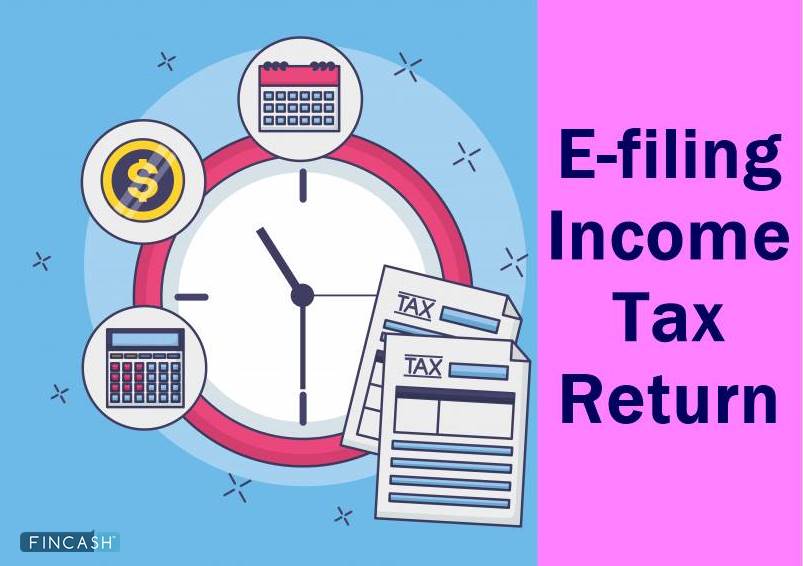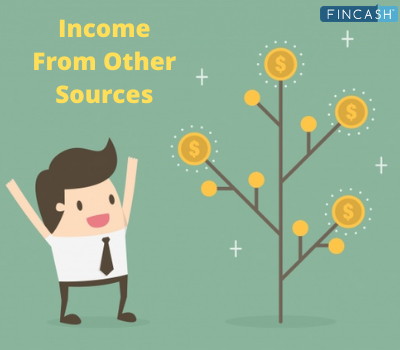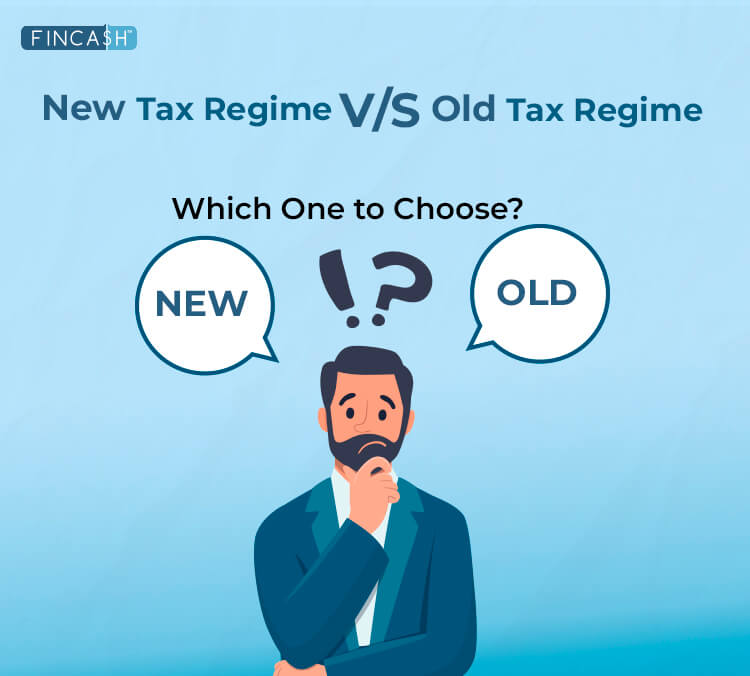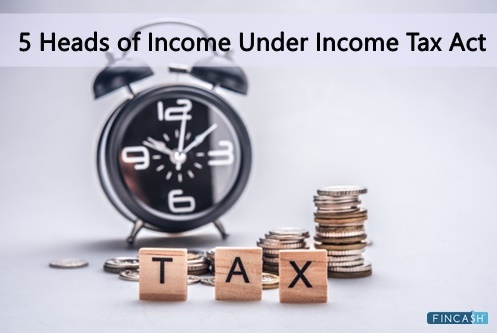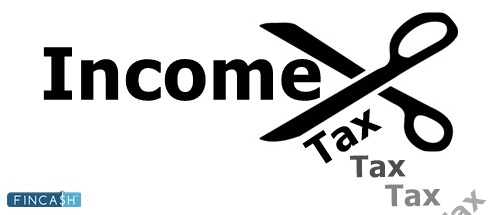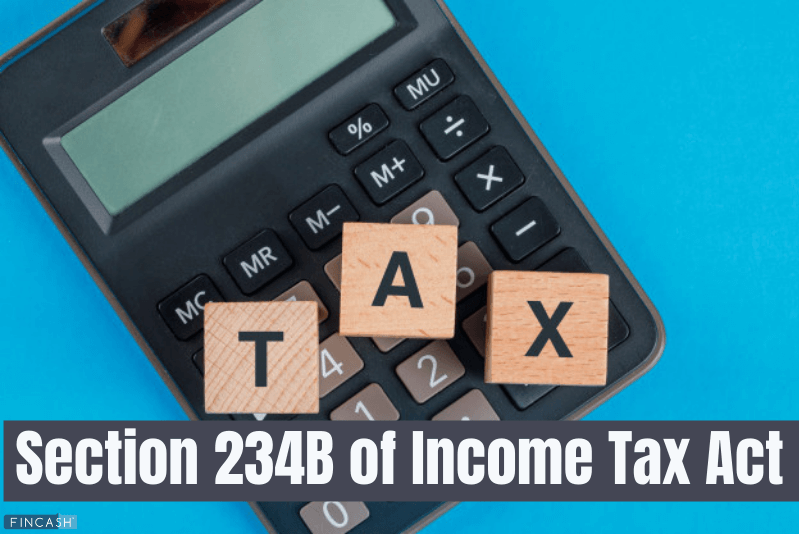Income Tax Planning
The end of the financial year is near! Salaried people are starting ahead with Tax Planning along with exploring avenues to claim a refund of paid tax. Though, income can be generated from diversified sources, but the majority of Indians earns income from a single source like a job or business.
Before we go into the details of income tax planning, let’s first understand a few key principles of income tax.
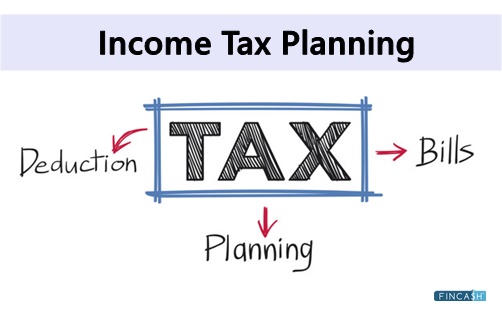
Five Heads of Tax Planning
- Income from salary
- Income from house property
- Profit from business
- Capital gain
- Other source of Income
1. Income from Salary
When a person receives a paycheck for his job from a company it is called as salary. There must be a contract existing as per the rule of law, which can established that the payer is the employer and the receiver is the employee.
One this is established, an employee can receive the salary (remuneration’s) in following forms:
In reference to Indian income tax laws, the terminology to the salary can be the followings-
- Fees
- Wages
- Advances
- Allowances
- Pension
- Gratuity
- retirement benefits etc.
2. Income from House Property
The income earned by the owner of house property is taxable. But only if the house property is let-out on rent, then the income in the hands of the owner becomes taxable. In case the house property is self-occupied, there will be no income.
The formula for tax liability on income from house property is calculated as such:
Earning - Expenses = Profit
3. Profit from Business
The profit made by the business is liable for taxation. However, one shouldn't confuse with profit and income as a term. Income from business, minus the allowable expenses incurred while running the business, is profit. In order to compute profit from the business, it is important for the taxpayer to be aware of the allowed expenses available as deductions.
Talk to our investment specialist
4. Capital Gain
Capital Gains tax is based on the holding period of the capital asset. There are two categories of capital gains- the Long Term Capital Gain (LTCG) and the Short Term Capital Gain (STCG).
Short Term Capital Gain
Any asset/property which is sold within less than three years of acquisition are considered as short-term assets, hence the profit earned by selling the asset is called to be short-term capital gain.
In shares/equities, if you sell the units before one year of the purchase date, the profit would be considered as the short-term capital gains.
Long Term Capital Gain
Here, the profits earned by selling the property or asset after three years is called as long-term capital gains. In case of equities, LTCG is applicable if the units have been held for at least one year.
Capital assets that are classified as long-term capital assets if the period of holding exceeds 12 months include:
- Units of UTI & Zero Coupon Bonds
- Equity shares that are listed on any stock exchange
- The units of equity oriented Mutual Funds
- Any listed debenture or government security
5. Other Source of Income
There are other types of income sources which will fall under “other income” head are as below:
- Interest earnings
- Dividend earnings
- Gifts
- Provident Fund income
- Income from games like lottery, race course, etc.
Calculate Income Tax Liability
For the person who wants to calculate ones income tax liability shall follow the below:
- List down all source of income.
- Categorise these income in the above 5 heads.
Once this is done, the next step is to know about the exemption’s.
Let's what are exemptions in Income tax.
Income Tax Allowances and Deductions
Income tax exemptions and dedications offer plenty of opportunities to save tax for salaried individuals. With the help of these deductions and exemptions, you could reduce your tax substantially. These are the following options:
1. House Rent Allowance (HRA)
A salaried person who lives in a rented accommodation can get the benefit of House Rent Allowance (HRA). This could be totally or partially exempted from the income tax. But, a person not living in a rented accommodation and still wants to continue to receive HRA, it will be taxable. It’s important for an individual to keep rent receipts and evidence of any payment made towards rent.
2. Standard Deduction
Standard Deduction has been reintroduced in the Union Budget 2018 by the Indian Finance Minister. An employee can now claim INR 40,000 deduction from the total income, thereby reducing the tax outgo. This deduction has replaced the medical reimbursement of INR 15,000 and transport allowance of INR 19,200. As a result, a salaried individual can avail an additional income tax exemption of INR 5800 with effect from FY 2018-19.
3. Leave Travel Allowance (LTA)
As per the Income Tax law, a salaried person can also benefit from LTA exemptions. The exemption doesn’t include costs incurred for an entire trip such as food expenses, shopping, entertainment and leisure among others. This allowance can only be claimed for a trip taken with your spouse, children, and parents, but not with other relatives. One needs to Submit the bills to their employer to claim this exemption. LTA only covers domestic travel, and it doesn’t cover the cost of international travel. The mode of such travel must be either air, railway or public transport.
4. Section 80C, 80CCC and 80CCD(1)
Section 80C
It is the most popular option for saving income tax. An individual or an HUF (Hindu Undivided Families) can claim deduction up to INR 1.5 lakhs. Deductions under Section 80C of the Income Tax Act, 1961 are offered for the investments made in a range of instruments.
Section 80CCC
Once can also get a deduction for the annuity plan of Insurance companies. But, in this option you cannot contribute more than 10 percent of your salary or gross income. Also, one can only claim deductios up to INR 1 lakh in a year.
Section 80CCD(1)
A person is eligible for tax deduction by contributing to pension plans. In pension plans the limit for tax deduction is 10 percent of salary or 20 percent of gross income.
Some of such investments are given below which are eligible for an exemption under Section 80C, 80CCC and 80CCD(1) are-
- Equity Linked Savings Scheme (ELSS)
- Life Insurance premium
- Employee Provident Fund (EPF)
- Annuity/ Pension Schemes
- Tuition Fees for children
- Principal payment on home loans
- Contribution to PPF Account
- Sukanya Samriddhi Account
- Fixed Deposit (Tax Savings)
- NSC (National Saving Certificate)
- Post Office time deposits
- National Pension Scheme
5. Section 80C and Section 24
If a salaried person is taking a Home Loan for the house, the interest payment is tax exempted. Homeowners can claim a tax deduction up to INR 2 lakhs for interest on a home loan. There are some conditions for this exemption. If the house property is let out, the deduction is allowed for the entire interest pertaining to such home loan.
6. Section 80D
One can claim deduction for medical expenses. A salaried person can save tax on medical insurance premiums paid for the health for self, family and dependents. These medical expenses could be deducted from overall taxable income. The limit for this deduction is INR 25,000 for premiums paid for self/family.
7. Section 80E
If there is an education loan, one can claim income tax deductions. There are certain conditions applicable to this deduction. One can avail this tax deduction maximum of seven years. Also, one must take an education loan from a financial institution. The benefits will add only if you take an education loan for self, children or spouse.
8. Section 80TTA
A deduction of INR 10,000 on income earned in the form of Bank interest can be claimed in this option. This exemption is allowed to Individuals and HUFs.
9. Section 80G
One who makes donations to charitable organizations can claim for tax exemption under Section 80G of the Income Tax Act, 1961. One might get exemptions of 50 percent to 100 percent of the amount donated.
Who Must Pay Income Tax?
Anybody who is working in India and is making money, should pay income tax to the Government of India. As per income tax act, the tax payers has been categorised into the following types:
- Individual
- HUF (hindu undivided family)
- Company
- Firm
- Association of persons
- Local authority and
- Other people not included in above list
Latest Union Budget 2021-22
No changes in income tax slabs or rates have been proposed. Also, no changes in additional tax exemptions or deductions been introduced. Standard Deduction for the salaried and pensioners also remains same as before. With no change in the income tax slabs and rates and basic exemption limit. An individual tax payer will continue to pay the tax at the same rates applicable in FY 2020-21.
| Income Range Per Annum | Tax Rate 2021-22 |
|---|---|
| Upto INR 2,50,000 | Exempt |
| INR 2,50,000 to 5,00,000 | 5% |
| INR 5,00,000 to 7,50,000 | 10% |
| INR 7,50,000 to 10,00,000 | 15% |
| INR 10,00,000 to 12,50,000 | 20% |
| INR 12,50,000 to 15,00,000 | 25% |
| Above INR 15,00,000 | 30% |
Income Tax Slab & Rate for FY 25 - 26 (AY 20-21)
Here's the income tax slab rates FY 25 - 26 (AY 20-21) for-
- Individuals & HUF (Age <60 years)
- Senior Citizens (Age: 60-80 yrs)
- Senior Citizens (Age > 80 yrs)
- Domestic Companies
1. Individual Tax Payers & HUF (Less Than 60 Years Old)– I
| Income Range Per Annum | Tax Rate | Health and Education Cess |
|---|---|---|
| Up to INR 2,50,000 | No tax | Nil |
| Above INR 2,50,000 to 5,00,000 | 5% | 4% cess |
| Above INR 5,00,000 to 10,00,000 | 20% | 4% cess |
| Above INR 10,00,000 to 50,00,000 | 30% | 4% cess |
| Above INR 10,00,000 to 1 crore | 30% + 10% surcharge | 4% cess |
| Above INR 1 crore | 30% +15% surcharge | 4% cess |
Rebate under section 87(A) 100% Tax Rebate subject to maximum of INR 2,500 available to residents whose total income does not exceed INR 3.5 lakhs
2. Senior Citizens (60 Years Old Or More but Less than 80 Years Old)
| Income Range Per Annum | Tax Rate | Health and Education Cess |
|---|---|---|
| Up to INR 3,00,000 | No tax | Nil |
| Above INR 3,00,000 to 5,00,000 | 5% | 4% cess |
| Above INR 5,00,000 to 10,00,000 | 20% | 4% cess |
| Above INR 10,00,000 to 50,00,000 | 30% | 4% of cess |
| Above INR 50,00,000 to 1 crore | 30% + 10% surcharge | 4% of cess |
| Above INR 1 crore | 30% +15% surcharge | 4% cess |
Rebate under section 87(A) 100% tax rebate subject to maximum of Rs. 2,500 available to resident whose total income does not exceed Rs. 3.5 lakhs
3. Senior Citizens (80 Years Old Or More)
| Income Range Per Annum | Tax Rate | Health and Education Cess |
|---|---|---|
| Up to INR 2,50,000 | No tax | Nil |
| Up to INR 5,00,000 | No tax | Nil |
| Above INR 5,00,000 to 10,00,000 | 20% | 4% cess |
| Above INR 10,00,000 to 50,00,000 | 30% | 4% cess |
| Above INR 50,00,000 to 1 crore | 30% + 10% surcharge | 4% cess |
| Above INR 1 crore | 30% +15% surcharge | 4% cess |
4. Domestic Companies
| Turnover Particulars | Domestic Companies | Firms |
|---|---|---|
| Income Tax for turnover upto INR 400 crores | 25% | 30% |
| Income Tax for turnover above INR 400 crores | 30% | 30% |
| Cess | 3% + surcharge | 3% + surcharge |
| Surcharge | 7% if the income is more between INR 1 crore to 10 crore. And, income above INR 10 crore will be taxed 10% | 12% of tax if the total income exceeds INR 1 crore |
All efforts have been made to ensure the information provided here is accurate. However, no guarantees are made regarding correctness of data. Please verify with scheme information document before making any investment.
